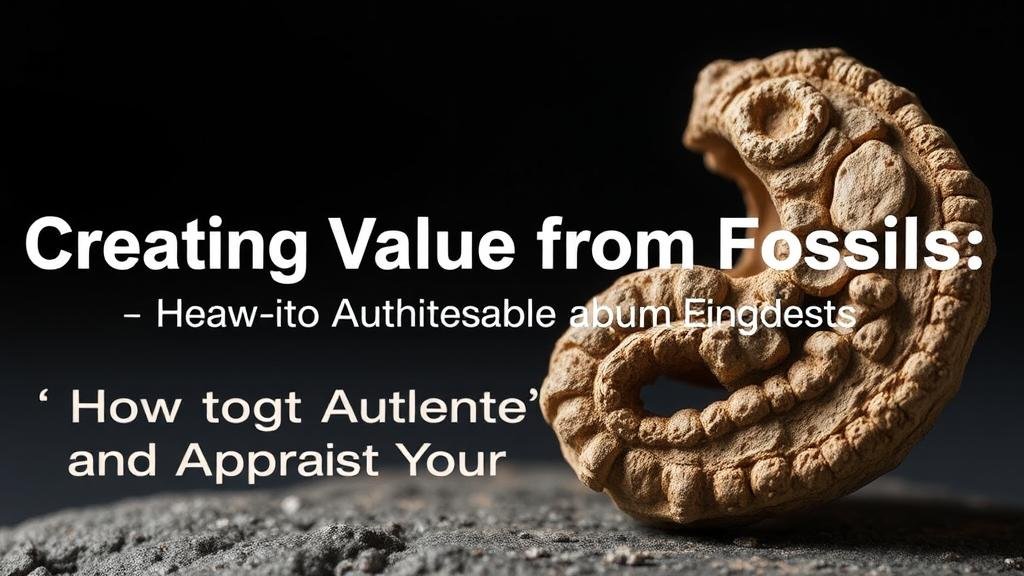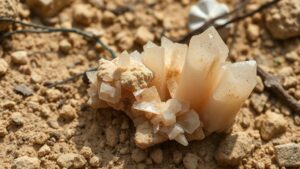Creating Value from Fossils: How to Authenticate and Appraise Your Finds
Creating Value from Fossils: How to Authenticate and Appraise Your Finds
For rockhounds and mineral collectors, the thrill of discovering a fossil is often matched only by the curiosity surrounding its authenticity and value. Understanding how to authenticate and appraise fossil finds is crucial for any collector looking to create value from their discoveries. This article will guide you through the process of verifying and appraising fossils, using industry standards and practical insights to maximize the potential of your collection.
Understanding Fossil Authentication
The first step in creating value from fossils lies in authenticating your finds. Authentic fossils can vary from common specimens to exceptionally rare discoveries; however, the market is rife with replicas and forgeries. To properly authenticate a fossil, consider the following steps:
- Visual Inspection: Examine the fossil closely for characteristic features such as texture, color, and structural details. Authentic fossils typically display natural wear from geological processes.
- Scientific Analysis: Seek the services of a paleontologist or a geological laboratory to conduct a thorough evaluation. Methods like carbon dating, X-ray fluorescence, and scanning electron microscopy can identify the fossils age and composition.
- Provenance Research: Investigate the fossils history. A documented chain of custody enhances authenticity, especially for high-value specimens.
An example of successful authentication includes the discovery of a dinosaur bone that was rigorously tested for its mineral composition, confirming its age to be over 65 million years, thus increasing its market value significantly.
Factors Influencing Fossil Value
Once authentication is established, the next step is appraising the fossil. Several key factors influence the value of a fossil, including:
- Rarity: Fossils that are rare or unique can command higher prices. Fossils from extinct species or limited geographical regions often fall into this category.
- Condition: Well-preserved fossils with minimal damage or restoration tend to have higher value. For example, a complete, unaltered trilobite fossil will be valued much more than the same fossil with significant repairs.
- Market Demand: Like any collectible, demand fluctuates with trends. For example, during the Jurassic dinosaur trend, the value of dinosaur fossils significantly increased.
- Scientific Importance: Fossils that contribute to significant paleontological discoveries or help fill gaps in the fossil record will also have a higher appraisal value.
The market for well-documented pterosaur fossils, once considered niche, has seen a surge in interest among collectors, demonstrating how demand can drive prices skyward.
Conducting a Proper Appraisal
To appraise your fossil accurately, follow these actionable steps:
- Gather Documentation: Compile all relevant documentation, including scientific studies, takeaway valuation reports, and proof of provenance.
- Consult Experts: Reach out to reputable fossil appraisers or auction houses to get a professional assessment. For example, the American Association of Paleontologists provides resources to locate qualified appraisers.
- Use Online Resources: Websites such as FossilEra and The Fossil Forum offer platforms for research and pricing trends. Actively participating in community forums can also yield insights into valuations.
Recognizing the shifting nature of fossil values, such as the boom in interest surrounding marine fossils following a resurgence in documentaries about ancient oceans, can also guide collectors in understanding when to sell.
Conclusion: Maximizing Your Fossil Finds
Creating value from fossils involves meticulous authentication and informed appraisal methods. By understanding the principles of fossil evaluation–from what constitutes authenticity to the various factors influencing value–rockhounds and mineral collectors can enhance their collections strategically. Remember to leverage expert resources, keep informed of market changes, and participate in collector communities for the best outcomes.
Ultimately, the journey of fossil collecting is as rewarding as the finds themselves. Not only does this practice enrich your understanding of Earth’s history, but it also presents opportunities for financial investment when approached with knowledge, passion, and integrity.


